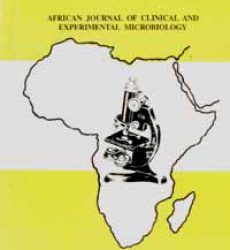Background: Type I diabetes (T1D) is the most common form of diabetes in most parts of the world.
Aim: The association between cytomegalovirus (CMV)and T1D mellitus was studied, with comparison to healthy subjects and to correlate its level with different clinical and laboratory parameters.
Materials & Methods: This study included 68 children and adolescents who were classified into two groups. GroupI comprised 53 patients diagnosed with T1D and having regular follow up in the pediatric endocrinology out-patient clinic, Minia University children’s hospital. Group II comprised 15 apparently healthy subjects, age and sex matched to the diseased group. According to the onset of diabetes, we divided the diabetic group into two sub-groups. Group Ia (newly diagnosed) comprised 20 patients, with ages ranging between 7 and 18 years; 10 were males (50 %), and 10 were females (50 %). Whilst group Ib (duration of disease >1 year) comprised 33 patients, with ages ranging between 6 and 17 years; 17 were males (49%) and 18 were females (51%). The studied groups were subjected to the following: thorough history taking, clinical examination and laboratory investigations (random blood glucose levels) and HbA1c%. DNA was extracted using QIAamp Min elute kit protocol for detection of cytomegalo virus by RTRCR.
Results:The frequency of cytomegalovirus was significantly higher in T1D children than the control and in group Ia than group Ib.
Conclusion: T1D children had significantly higher serum cytomegalovirus than the control group, as did those newly diagnosed compared to those with longer duration of illness.
Keywords:T1D, Cytomegalo-virus, Haemoglobin A1C, Polymerase chain reaction Key Messages: Dose of insulin, significant +ve correlations, RT-PCR
ASSOCIATION DU CYTOMEGALOVIRUS AVEC DIABETE SUCRE DE TYPE 1 CHEZ LES ENFANTS DANS LE GOUVERNORAT DE MINIA.
Contexte : Diabète de type 1(DT1) est la forme la plus courante du diabète dans la plupart des régions du monde.
But : L’association entre le cytomégalovirus et DT1 sucre a été étudiée avec une comparaison aux sujets sains et pour corréler son niveau avec les divers paramètres cliniques et laboratoires.
Matériaux et Méthodes : Cette étude a inclus 68 enfants et adolescents qui ont été classés en deux groupes. Le Groupe I a compris 53 patients diagnostiqués avec DT1 et ayant suivi régulier dans la clinique endocrinologie pédiatrique ambulatoire, l’Université hôpital d’enfants de Minia. Le Groupe II a compris 15 sujets apparemment sains, l’age et le sexe adapté au groupe malade. Selon l’attaque du diabète, nous avons divisé le groupe diabétique en deux sous – groupes. Le Groupe Ia (nouvellement diagnostiqué), a compris 20 patients, dont l’âge est compris entre 7 et 18 ans ; 10 étaient males (50%), et 10 étaient femelles (50%). Alors que le Groupe Ib (la durée de malade >1 ans) comprenait 33 patients ; 17 étaient males (49%), et 18 étaient femelles (51%). Les groupes étudiés ont été soumis a la suivante : grâce a la
prise de l’histoire, examen clinique et examen de laboratoire (nouveau de glycémie aléatoire) et HbA1c%. L’ADN a été extrait en utilisant QIAamp Min elute protocole du kit pour le dépistage du cytomégalovirus par RT – RCR.
Résultats : La fréquence du cytomégalovirus était considérablement plus élevée dans les enfants DT1 que le contrôlé et dans le Groupe Ia que le Groupe Ib.
Conclusion : Les enfants DT1 ont eu sérum cytomégalovirus plus élevé que le groupe contrôlé, comme ceux nouvellement diagnostiqués par rapport a ceux qui ont une plus longue durée de la malade.
Mots Clés : DT1, Cytomégalovirus, Hémoglobine A1C, la réaction en chaine de la Polymérase.
Messages Clés : Dose d’insuline, Significative +ve corrélations, RT – PCR.
Download full journal in PDF below
Association of cytomegalo virus with type I diabetes mellitus among children in Minia Governorate

